Coupling landscape-scale diagnostics surveys, on-farm experiments, and simulation to identify entry points for sustainably closing rice yield gaps in Nepal

Authors:
CONTEXT
Rice is the primary staple food crop in Nepal, contributing 20% of the agricultural gross domestic product and more than 50% of the total calories in the national diet. Nevertheless, the productivity of rice (3.36 t ha−1) is the lowest in South Asia region.
OBJECTIVE
The objective of this study was to employ a mixed-methods approach to characterize and decompose yield gaps (YGs) in the context of identifying sustainable intensification pathways for rice production in Nepal.
METHODS
Methodologies include: a) landscape-scale crop diagnostic survey on crop management, field attributes, and productivity outcomes combined with gridded soil and daily weather data to decompose rice yield gaps into constituent factors with machine learning diagnostics; b) with survey data, computation of key performance indicators to identify factors associated with productivity, profitability, and resource use efficiencies; c) complementary multi-location on-farm experiments (2011–2017) evaluating new agronomic management practices; and d) dynamic simulation (ORYZA3) to derive estimates of rice yield potential.
RESULTS AND CONCLUSIONS
Analysis of survey data suggests an exploitable YG of 2.57 t ha−1 (40%) and the total YG of 4.85 t ha−1 (55%) indicating substantial scope for increasing rice yields in Nepal. Frequency of irrigation, amount of late-season rainfall, soil type, amount of early-season rainfall, presence of water stress, soil pH, and nitrogen (N) and phosphorus (P) fertilizer rates are the principal determinants of productivity outcomes in descending ranked order. Efficiency metrics suggest rice farmers in the study region make good use of fertilizer inputs, but since application rates are very low (e.g. most farmers apply <20 kg P ha−1) unsustainable mining of soil nutrients is likely common. Farmers in the top 10% of the yield distribution had lower greenhouse gas emission intensities (−43%), increased water productivity (+66%), and higher use efficiencies of N and P fertilizers (+28% and + 20%, respectively), suggesting that yield intensification can be achieved without tradeoffs with key environmental performance indicators. On-farm experiments conducted over several seasons support insights from surveys by demonstrating that major gains in rice yield (1.86 t ha−1) and profitability (US$ 243 ha−1) are achievable through the adoption of good agronomic practices.
SIGNIFICANCE
Through a mixed methods approach, our results suggest that adoption of integrated 'good agronomic practices' can close YGs and improve food security outcomes associated with the rice-based agricultural systems of Nepal while simultaneously preserving or enhancing key sustainability and livelihood objectives.
